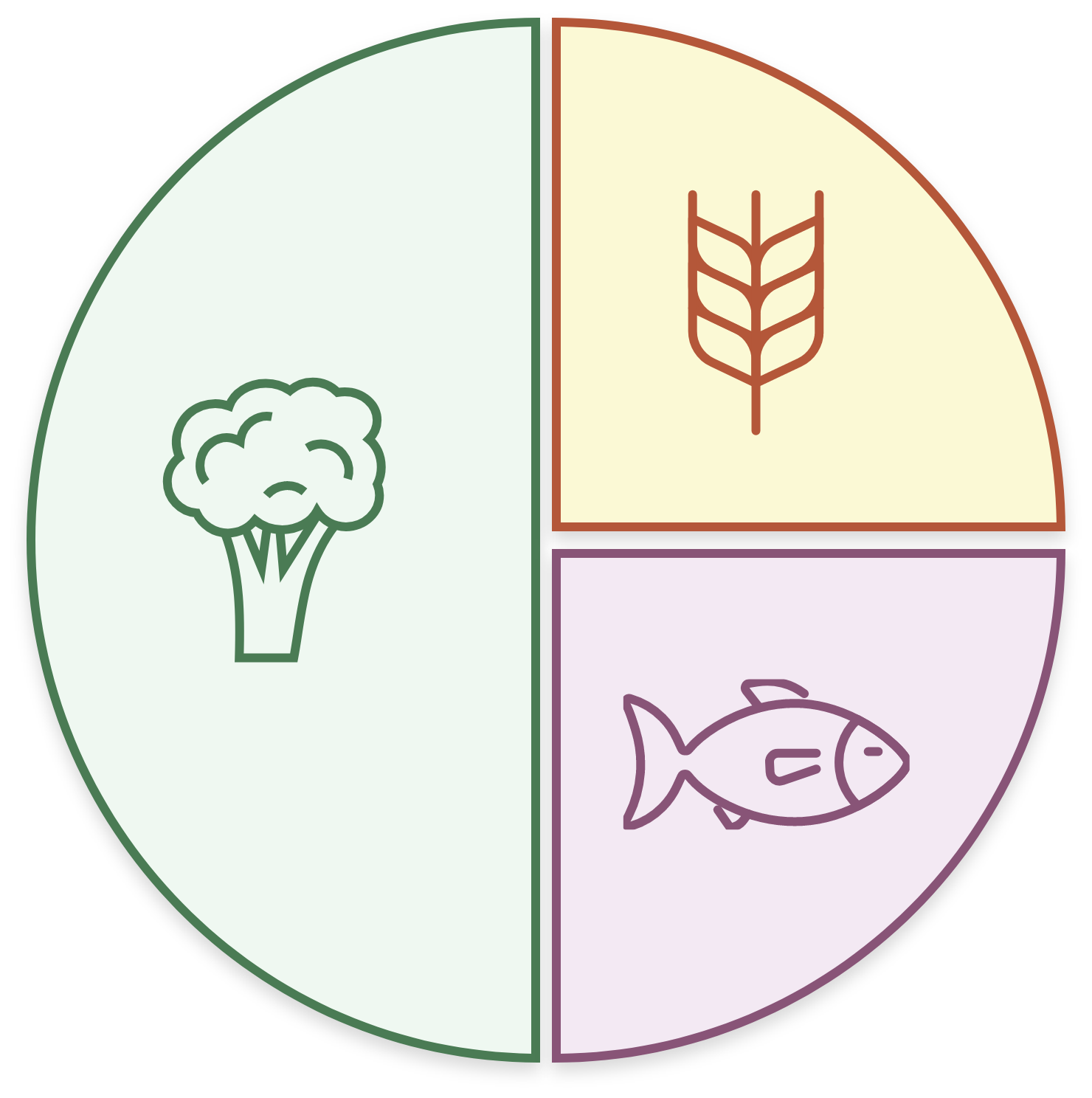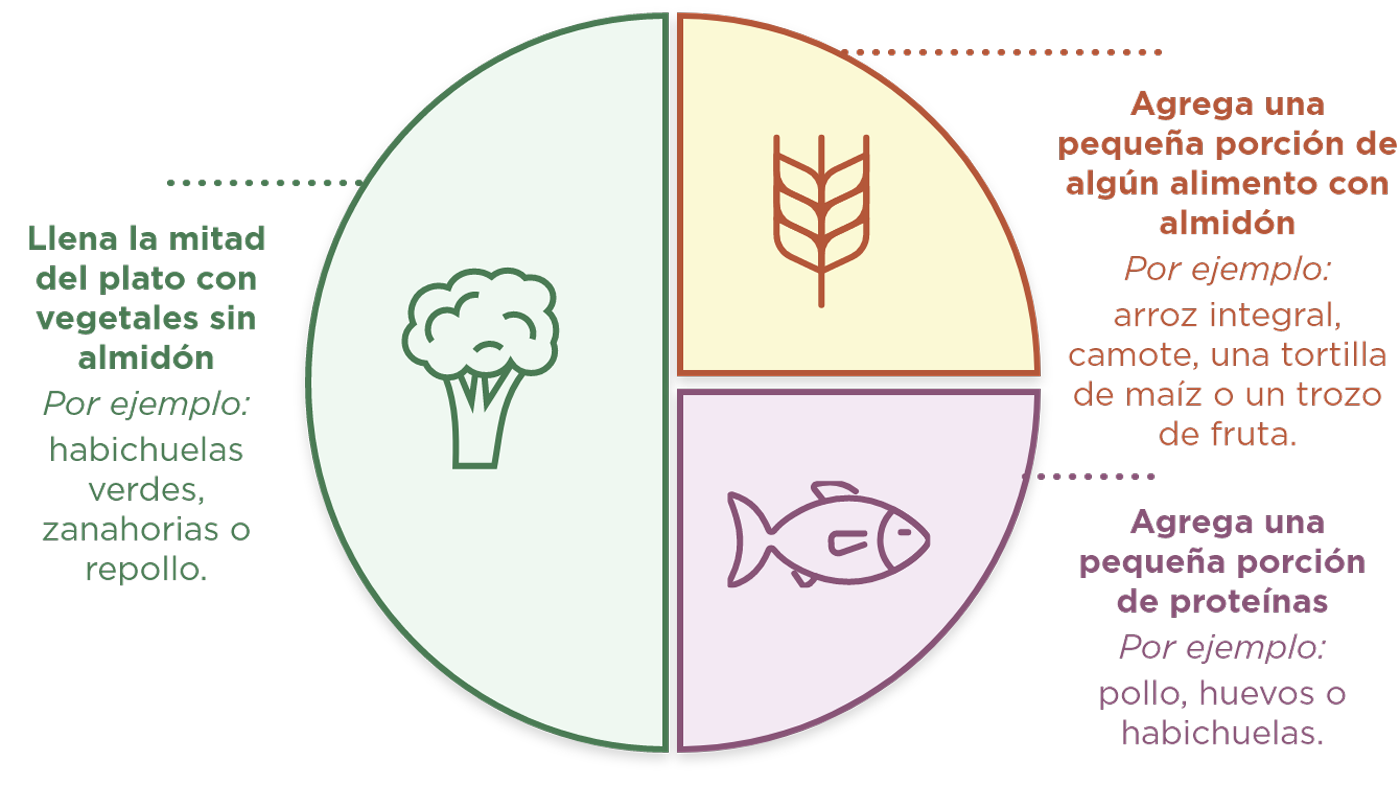
Plan de alimentación para personas con prediabetes
- Home
- Live Well Blog
- Plan de alimentación para personas con prediabetes

Sofía quería tener otro bebé.
Sin embargo, su médico le diagnosticó prediabetes, la cual podía convertirse en diabetes si no hacía algunos cambios en su vida.
Ella lo sabía porque había padecido diabetes gestacional (diabetes durante el embarazo) al tener a su primer hijo, lo cual significaba que tenía más chances de desarrollar diabetes con el tiempo.
Sofía no se rindió: buscó ayuda y desarrolló un plan.
¡Tú también puedes hacerlo!
La prediabetes se da cuando el nivel de azúcar en sangre está un poco alto.
No llega a ser diabetes, pero puede llegar a serlo si no se actúa al respecto.
Los médicos utilizan los siguientes valores para los análisis:
Es posible revertir la prediabetes de las siguientes formas:
(en caso de ser necesario)
A Sofía le fue muy difícil perder el peso del embarazo. Su hijo ya había cumplido 3 años y ella no había encontrado nada que le funcionara. Por ello, se comunicó con su nutricionista del WIC, que le dio los siguientes consejos:
Elegir vegetales sin almidón, como zanahorias, repollos, habichuelas verdes y brócoli.
Reducir el consumo de papas, maíz, arroz y pan blancos. Elegir granos integrales como alternativa.
No consumir papas fritas, comidas rápidas y bocadillos empaquetados.
Beber agua en vez de refrescos o bebidas dulces.
Intentar realizar al menos 30 minutos de actividad la mayoría de los días. Esta incluye caminar, bailar, nadar y jugar afuera.
Al cerebro le toma 20 minutos reconocer cuando alguien está satisfecho.
Este es un método para comer parecido al de la dieta mediterránea, que ayuda a las personas a mantenerse saludables y a satisfacer su apetito por más tiempo.



Así lo logró Sofía:
- Planificando bocadillos una vez por mes, con verduras y granos integrales. Cocinó meriendas simples en una olla de cocción lenta, para aprovechar las sobras. Eso le dejó dos tardes libres de la cocina para enfocarse en hacer ejercicio.
- Haciendo ejercicio con su hijo. Comenzaron a caminar juntos cinco veces a la semana por al menos 30 minutos, tanto en el parque como dentro del centro comercial en días lluviosos. A veces, también hacía entrenamientos de baile en casa.
- Bebiendo más agua. Llevó una botella con agua a todos lados ytuvo a mano bocadillos saludables, como frutas o queso en hebras.
Luego de 3 meses, Sofía bajó 15 libras.
Empezó a sentirse con más energía y a moverse con mayor facilidad. Ya no le costaba respirar al caminar y podía agacharse a levantar los juguetes del suelo con menos dificultad. También se sintió orgullosa de ser un modelo de salud a seguir para su hijo.
A los 6 meses posteriores, Sofía ya había perdido 27 libras y su nivel de azúcar en sangre volvió a la normalidad.
Luego de eso, hubo más buenas noticias: quedó embarazada de nuevo. Sofía mantuvo sus hábitos saludables y, cuando el médico le analizó el nivel de azúcar en sangre a las 24 semanas, los resultados mostraron que no tenía diabetes gestacional. Ella se sintió orgullosa por los cambios positivos que hizo… y tu puedes lograrlos también.

Consulta los siguientes recursos útiles:
- Diabetes Plate Menus and Recipes – American Diabetes Association
- Diabetes Meal Planning – Centers for Disease Control and Prevention
- Lower-Calorie, Lower-Fat Swaps – National Heart, Lung, and Blood Institute
- Eat Healthy, Spend Less – National Institutes of Health
- Healthy Cooking and Snacking – National Heart, Lung, and Blood Institute
REFERENCES:
American Diabetes Association. Understanding diabetes diagnosis.
https://diabetes.org/about-diabetes/diagnosis
American Diabetes Association. Five things you should know about pre-diabetes.
https://diabetes.org/blog/five-things-you-should-know-about-prediabetes
Yale Medicine. Gestational diabetes: Symptoms, causes, treatments.
https://www.yalemedicine.org/conditions/gestational-diabetes-symptoms-causes-treatments#:~:text=Approximately%2010%25%20of%20pregnant%20women,over%20the%20past%2020%20years
Author: Bridget Swinney MS, RDN, LD